There’s a sort of industry secret with mineral sunscreens: a lot of them contain unregulated chemical sunscreens. Which isn’t always a big problem… but it also kind of is.
Today we’re talking about inactive ingredients in sunscreens that aren’t really inactive.
The video is here, keep scrolling for the text version….
SPF boosters
It’s not that easy to make a sunscreen. It might seem like all that’s important in a sunscreen are the active ingredients. After all, they’re often listed separately on a label in the US and Australia, anyway, and the percentages are right there:

But if you just mixed these ingredients into a base, you probably won’t get SPF 50. That’s because how these active ingredients are distributed in the rest of the sunscreen is crucial in determining to how well the sunscreen blocks UV, making sunscreen one of the most difficult products to formulate. Lots of things like the other ingredients, and how they’re mixed together can make a big difference – it’s one of the reasons why it can be hard to predict the SPF of a sunscreen just from the active ingredient percentages, which I’ve talked about in my post on SPF testing.
One cosmetic chemist told me it took her 6 months(!) to update an existing SPF 30 sunscreen to make it SPF 50 – as well as changing the levels of actives, she also had to change a whole bunch of the inactives too.
So there are a bunch of inactive ingredients marketed to help the actives in a sunscreen work better, and achieve a higher SPF, commonly called SPF boosters.
A lot of SPF boosters are genuinely just helping out the proper sunscreen actives. Some examples:
Film formers and solvents help keep the sunscreen actives spread out in an even film on your skin. It’s a bit like a smooth paint versus one that isn’t mixed up well – if the coverage isn’t even, you end up with gaps in the paint layer. It’s like a football team spreading out in front of the goalie. (There will be many analogies today.)
UV deflecting particles change the way the UV travels in the sunscreen film For example, they can bounce the UV around for longer in the sunscreen film so more of it gets the chance to be absorbed. It’s like your football players getting better at deflecting the ball.
But some of them absorb UV light with their structures and convert it to other forms of energy, like heat… which is exactly how actual sunscreen ingredients work. So this is like just dumping a bunch of extra players on the field.
Butyloctyl salicylate: a “booster”?
Take butyloctyl salicylate. It’s usually branded as a solvent or emollient moisturiser, and it does do those things… but it’s a lot more than that.
Here is its structure, alongside octisalate’s:
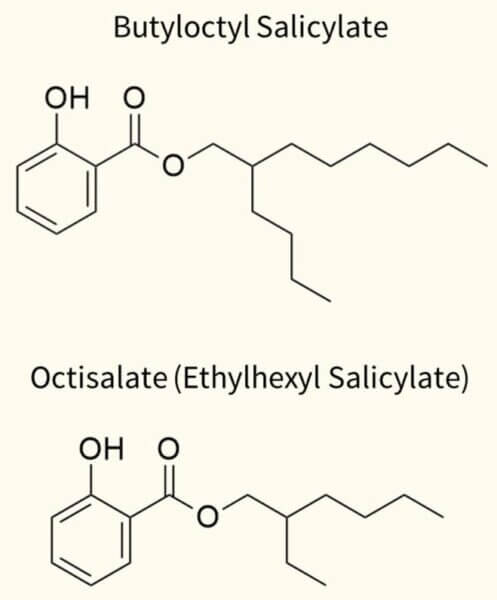
The official name for octisalate is ethylhexyl salicylate which, as you can tell from the name, is butyloctyl salicylate’s relative. But is it a twin brother, or a distant cousin three times removed? Well…
The first part of the name tells you how many carbon atoms are attached to this right part of the structure – there are four more carbons on butyloctyl salicylate.
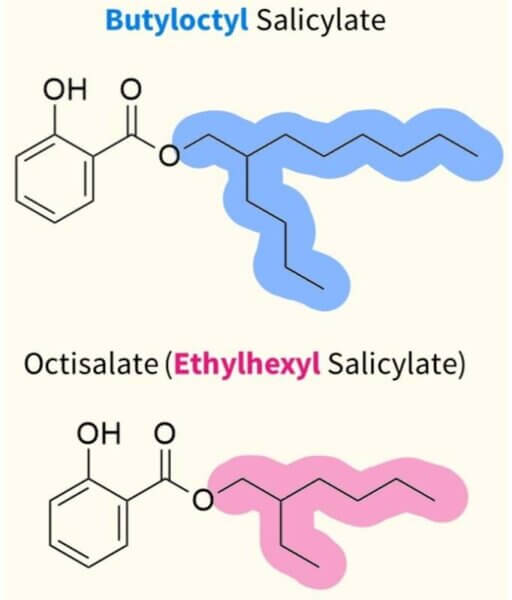
If you know a bit of chemistry, or if you’ve seen my post on how sunscreens work, you’ll know that the section that absorbs UV is not the bit that’s different. It’s this salicylate part on the left side with the ring that absorbs the UV light, and it’s the same in both molecules. The bit that’s different doesn’t actually interact with UV at all.
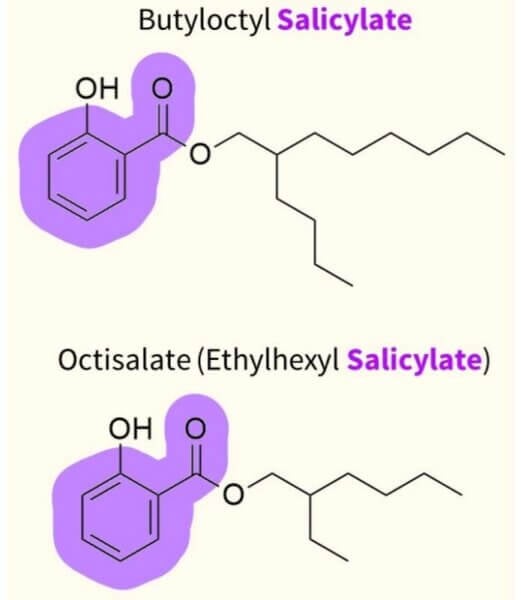
This is what their absorbance spectra look like:
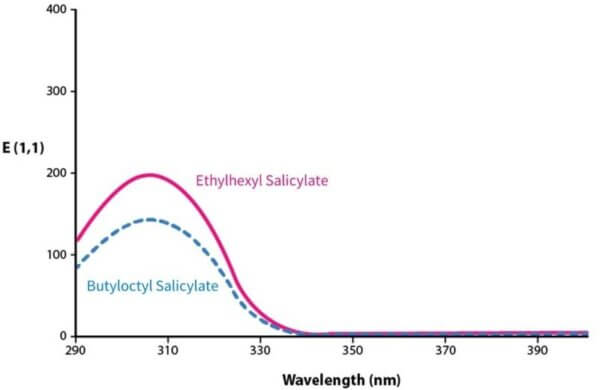
They both protect against UV around the same. (The difference is mostly just because butyloctyl salicylate weighs about 20% more, and this graph compares 1% solutions by mass, so there’s about 20% less of these rings in the sample with butyloctyl salicylate.)
So butyloctyl salicylate is really just like octisalate’s identical twin brother, with slightly longer hair. Functionally, and in every other relevant way, really, they’re the same thing. They both protect against UV around the same, and octisalate has those solvent and moisturising abilities of butyloctyl salicylate as well.
So why isn’t butyloctyl salicylate classified as a proper sunscreen active ingredient, in that top box with the percentage shown? Well, it seems like… the manufacturer just decided not to go through the proper legal process.
Sunscreen active regulation
Sunscreen actives in most regions are regulated in a special way. In the US and Australia they’re drugs/therapeutic goods, but this is the case even in regions like the EU, where sunscreens are technically cosmetics, but approved sunscreen actives are included in a special list in the regulations.
Getting a chemical sunscreen ingredient (or any sunscreen active) registered means you have to go through a special process. It involves submitting a whole bunch of safety data for regulators to assess. Based on the assessment, they decide if it’s going to be approved, if there are any special conditions of use (e.g. if it can be used in sprays or lip balms, if it needs a warning label, if there’s special grades allowed), and what the maximum percentage allowed should be.
Collecting this safety data and the whole process of registration can be very expensive, and takes many years – if you look at the reports for MCE (Mexoryl 400) which was officially approved in the EU in 2020, some of the safety data submitted is almost 10 years old.
Now maybe you might think all this admin seems a bit unnecessary. Why is there all this red tape?
Well, these processes are in place for a reason – to ensure everyone stays safe. If you buy a random sunscreen from a store and use it, you want to be reasonably confident that you won’t massively poison yourself or get sunburnt using it.
Before drug regulation became a thing in the early 1900s, people would get really sick or die from taking medications. You’d find alcohol and opium in medicines, even baby medicines (which I guess at least would make you feel better for a bit?). This is a big reason that pretty much every country has some sort of drug regulation.
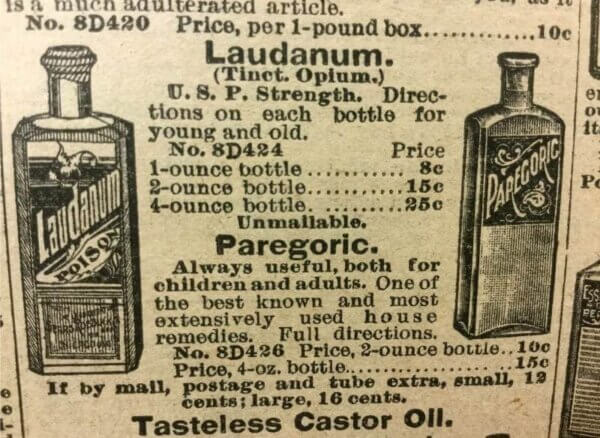
And within the regulations of the regions I looked at, if you’re using an ingredient in a sunscreen to absorb UV and protect the skin from UV, you are meant to register it. So from a legal perspective, butyloctyl salicylate probably should’ve been registered as proper sunscreen active.
Why hasn’t anyone done anything about this?
I honestly don’t know – in Germany and Switzerland, it’s been pointed out as a problem before by government agencies, but then nothing actually happened.
Is this a problem?
Using butyloctyl salicylate is really widespread and accepted in industry – tons of brands have it in their sunscreens, from multinational brands down to small brands who probably don’t realise it’s in there. I think that’s because butyloctyl salicylate is probably quite safe most of the time.
Octisalate is generally considered one of the safest sunscreen ingredients, and given how similar this is, you would expect the safety profile to be quite similar. In the US, EU and Australia you’re allowed 5% octisalate; you’re allowed 10% in Japan. I didn’t find any justification for how these percentages were decided in the first place, but octisalate hasn’t been officially flagged as an issue since.
Butyloctyl salicylate is recommended at 2 to 10%. So it does seem like most of the time, the total amount of octisalate and butyloctyl salicylate probably stays under 10%, so to me that seems like it’s probably not a huge issue for us as sunscreen consumers.
It is possible that if someone is allergic to salicylates, they’ll forget to check the inactive ingredients – but there are a lot of other salicylates in cosmetic products so people with allergies should be checking inactives anyway.
More of an issue is if you’ve discovered you are specifically allergic to octisalate, and you’ve been trying to avoid it, but you didn’t realise its twin brother with different hair was hanging out in a whole bunch of products.
But more of an issue is the lack of a dose limit because it isn’t regulated. Butyloctyl salicylate is probably safe at a similar dose to octisalate, but I suspect that some of the mineral sunscreens that use very small amounts of zinc oxide and titanium dioxide are maybe using a lot more butyloctyl salicylate than is recommended, which could potentially be unsafe. But it is hard to tell just from the ingredients list how much is being used and whether the formulators are being responsible about it, and that’s one of the risks of not having proper approval.
(I guess you could argue that maybe they have amazing innovations with special grades of minerals in their sunscreen, and they didn’t actually need butyloctyl salicylate. But then why would they use this in their products? Why wouldn’t they use something that didn’t absorb UV and just let their tech stand on its own? Why are they opening it up to this sort of criticism?)
My rant starts
But I do have a massive gripe with brands that put butyloctyl salicylate in their “100% mineral” sunscreens… while bashing chemical sunscreens.
Butyloctyl salicylate is basically just octisalate, but less safe. It doesn’t have the extra safety precautions that come with a properly approved sunscreen ingredient – like having performed safety studies, having a regulator go through the safety studies to work out the conditions for using it safely, having a limit on how much you can put into a product, having to declare the percentage, having assays done to check batches of raw materials coming in, and whether they’re stable in the final formula.
And this really highlights a common problem with clean beauty, known as regrettable substitution. They demonise particular ingredients for being toxic (based on misinformation and misinterpretation of studies, which I’ve talked about before). But these ingredients were used for a reason – they have a function in products. It is really difficult – maybe even impossible – to formulate a 100% mineral sunscreen that gives high SPF while being nice in texture, not sticky and with no white cast, and not drying.
So now that the clean brands have scared potential customers about chemical sunscreens, they can’t use them. And sunscreens are one of the few products where there is a very clear indication of how well it works right on the label: the SPF.
So these brands are profiting off this fear they’ve promoted about chemical sunscreens, while sneakily (or maybe unknowingly) using a less safe ingredient, when they could’ve been transparently using octisalate instead.
And I’m sure a lot of clean beauty brands have no idea about this, because you kind of have to be a bit clueless about science to be a clean beauty brand in the first place. I mean, the EWG have in their (in my opinion) typical pseudoscientific way rated octisalate as higher hazard than butyloctyl salicylate – I’m assuming it’s because octisalate is an approved chemical sunscreen that’s had more safety studies done. Or perhaps because they wanted to be able to give more brands their EWG verified label (which has a lot of costs associated with it, of course).
I actually didn’t realise how big a problem this was until recently.
As you probably know from my repeated complaints, I don’t like mineral sunscreens, so I never really paid too much attention to their marketing. I think they’re unnecessary for most people – a lot of people are only suffering through them (and probably getting less sun protection) because of misinformation. And now that I’ve looked into the marketing, it turns out a lot of “clean” mineral sunscreens were functionally combination or hybrid sunscreens all along.
The next part of the video is a scenic tour through what is (in my opinion) clean beauty hypocrisy. It doesn’t translate well to text so I recommend watching the video instead (it starts at 10:48), but here are some of the key points:
Brands claiming chemical sunscreens are worse than no sunscreen
This sort of “chemical sunscreens are worse than no sunscreen” BS makes me really mad, because these brands are making products less safe with their BS marketing. They’re also probably exposing people to a lot more UV, a known carcinogen, by making them use a sunscreen that doesn’t work as well for no good reason and scaring them about chemical sunscreens.
I read so many reviews while researching this video where people were going to great lengths to try to make mineral sunscreens work, because this marketing had made them feel like they needed to use mineral sunscreens. People are massively underapplying to avoid white cast, mixing it with stuff.
I even came across a brand that uses butyloctyl salicylate and actually tells people to apply pea sized amounts to their hands, rub them together and pat it in. A pea is about 0.5 mL, you’re meant to apply 30 mL to your body, no one is applying 60 peas.
I don’t think I’m even exaggerating when I say clean beauty is killing people. There was this survey done in 2017 in Australia that found that only 55% of adults agreed that sunscreen can be used safely on a daily basis – down from 61% in 2013/14. 17% of adults agreed that ingredients in sunscreen are bad for health if used regularly. And you can see that was quite early on in the clean beauty wave, and well before TikTok became a superpowered torrent of misinformation.
And it isn’t just like it’s fine because people will use mineral sunscreens instead.. A whole bunch of people are going to decide that mineral sunscreens aren’t worth the bother, and chemical and hybrid sunscreens are worse for you than the sun and giving you skin cancer anyway, so it’s just going to be people going into the sun without sunscreen. And these brands are also destroying trust in scientific and medical institutions who promote chemical sunscreens and other life saving things, and so it’s not just skin cancer but other cancers, infectious diseases, all that stuff. It’s winding back progress and there’s limited funding for health, the government has to waste money on things we already solved, and not spend money on things that need research.
Colorescience
They have “inactive” butyloctyl salicylate high up on the ingredients list for pretty much all their non-tinted sunscreens.
They say “100% chemical-free active ingredient” (a lot of sunscreen brands that use butyloctyl salicylate say this – I’m letting most of them off the hook if they don’t have any other stuff trashing chemical sunscreens, even though the EU marketing guidelines do say that all “free from” claims without a good reason are unfairly fearmongering on their own, and since butyloctyl salicylate is acting as a chemical sunscreen it would also be a dishonest claim).
Let’s skip past the fact that zinc oxide is a chemical.
Their FAQ says “Colorescience has never and will never use any chemical sunscreen actives”. I guess maybe they should add “legally approved” in there?
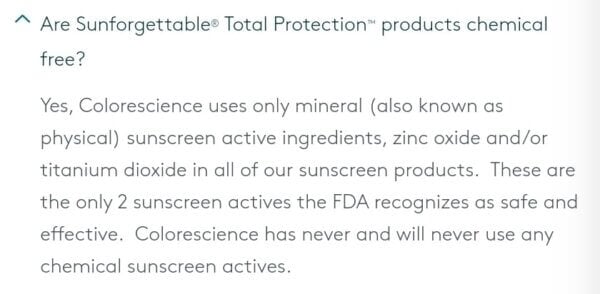
Interestingly Colorescience actually highlight the reasons why they don’t use chemical sunscreens, and they single out octisalate a bunch of times, even though their products contain outlaw octisalate.
Warnings about using chemical sunscreens during pregnancy – to me is particularly predatory, when you’re pregnant you’re super anxious, so many rules and conflicting info and hormones going through your body
Octisalate is a penetration enhancer – I think this comes from studies that looked specifically at penetration of small molecules like herbicides and hormones through skin (not sunscreens), and other studies have found that regular moisturisers do it too, but again – they’re using an ingredient that is so much like octisalate in their product it probably does the same thing.
A whole bunch of these zinc sunscreen brands have also started saying that the FDA is asking for additional safety data on chemical sunscreens, which is true, but in other regions regulators have checked the safety data for the same chemical sunscreens and approved them. It’s mostly that the FDA is very slow with sunscreen reform and has specific requirements for the new tests they want. And for butyloctyl salicylate, there’s no safety data required by the FDA because it’s ducking the regulations, and it hasn’t been scrutinised to the same extent in any other country either. If you’re saying chemical sunscreens are dangerous, then your ingredient is worse. Maybe you shouldn’t be exaggerating how dangerous they are?
Most brands highlighting the FDA request for extra data say chemical sunscreens in general. But extremely EXTREMELY interestingly, Colorescience says the FDA wants extra data on 11 ingredients, and they provide a list with no octisalate. But if you go to the FDA page they linked, it says the FDA actually wants extra info on 12 ingredients. So to me, this really seems like Colorescience realise they’re using essentially octisalate in a wig in their products.
“Chemical” ingredients have difficult to pronounce names – I don’t know how they can argue that isobutane or octinoxate is a scarier name than butyloctyl salicylate… or Colorescience
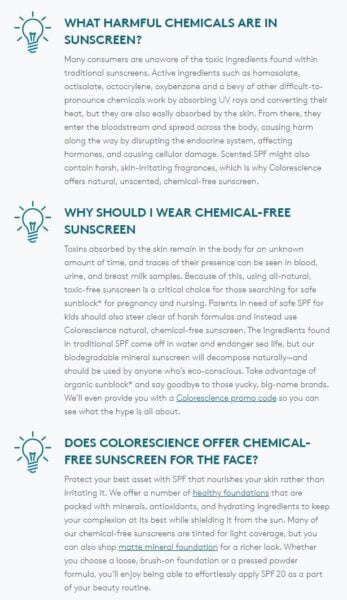
Harmful chemicals soak into the bloodstream, causing endocrine disruption, cellular damage – no evidence this happens in humans, with sunscreens, probably based on FDA blood absorption studies, safety assessed by other countries
“There is no evidence that zinc oxide harms coral” – Zinc oxide is worse for corals than a lot of chemical sunscreens, in that it causes harmful effects like bleaching at a lower concentration. And this isn’t just nano zinc oxide, since the toxic species appears to be dissolved zinc ions, which are produced from any zinc oxide. But this doesn’t seem to be a big issue except for maybe outliers, where there are a whole bunch of people swimming near the coral with tons of sunscreen on. The concentrations measured at reefs is much lower than what’s required to really damage coral. And this is the case with any sunscreen, including chemical sunscreens, including oxybenzone and octisalate. It’s really just these outlier measurements that seem to be a problem, and there are issues with this data, which I will talk about in a later video.
If that wasn’t enough, they also have tridecyl salicylate, which is like the third triplet with his hair parted the other way. And of course the EWG rates it safer than octisalate.
TiZo
“Free from chemical sunscreen filters” – except the ones that aren’t approved
Here’s their fun comparison showing how “minerals provide superior skin benefits” – and most of these are just not true, I’ve debunked a whole bunch of these before, here’s the speedrun version, and most of the brands I’ll be showing repeat a lot of these myths.
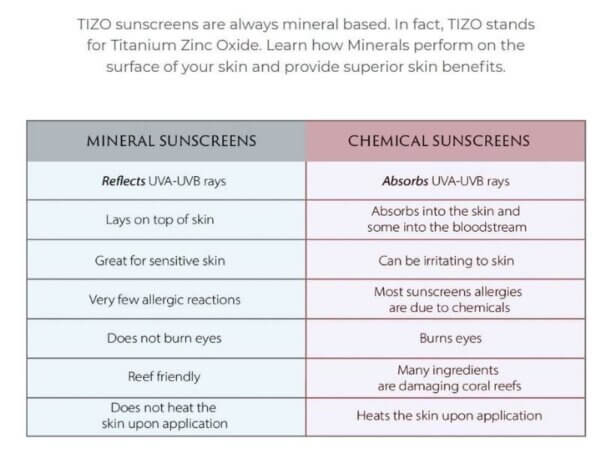
Mineral sunscreens absorb about 90% of incoming UV and convert it to heat just like chemical sunscreens, the total amount is insignificant anyway, it heats up your skin less than 1 degree.
A tiny amount of chemical sunscreens absorb into the blood but it doesn’t mean it’s harmful, we have very sensitive detection methods, plus newer chemical sunscreens are purposely designed to not absorb into skin well.
Some people find mineral sunscreens more irritating because they’re gritty and drying, lots of sunscreens for sensitive skin from outside the US use chemical filters.
Allergies are only a problem for people who are allergic, chemical sunscreens don’t all burn eyes and some people find mineral sunscreens worse
And all of this applies to butyloctyl salicylate too. So they’re promoting this misinformation, while relying on butyloctyl salicylate to make their product work.
CoTZ
Cotz stands for “contains only titanium and zinc”, they contain “no chemical sunscreens” (no). Their entire marketing spiel is very similar to TiZo – and it turns out that they have the same parent company.
Ghost Democracy
They turned the TiZo table into a bunch of essays, and they added stuff about how chemical sunscreens “directly lead to skin cancers”, which is just unsupported nonsense.
Chemical sunscreens (including the twin brother of the ingredient in their sunscreen) “set up an environment in which your skin absorbs the UV rays” “transforms them into heat” which results in “inflammation and irritation prone skin”, which “increase(s) your chances of skin reactions, they also increase your chances of exposing yourself to other illnesses, including skin cancer in extreme cases” – so they’ve blown up the less than 1 degree of heat into skin cancer. Do these people not eat hot food?
Babo Botanicals
Chemical sunscreens are “chemicals cooked up in a lab” (but not butyloctyl salicylate?)
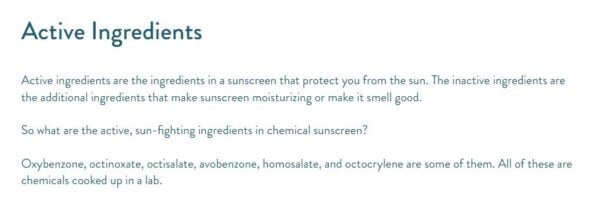
They tell you to “pay attention to the active ingredients” (but not the inactive?)
Chemical sunscreens “come at a cost for both you and the environment” (they conveniently list all the chemical sunscreens including octisalate)
They say “if you notice one of these chemicals listed in the ingredients list it’s best to keep looking”, they whip out the word “nasty”, and then they recommend two of their sunscreens that contain butyloctyl salicylate.
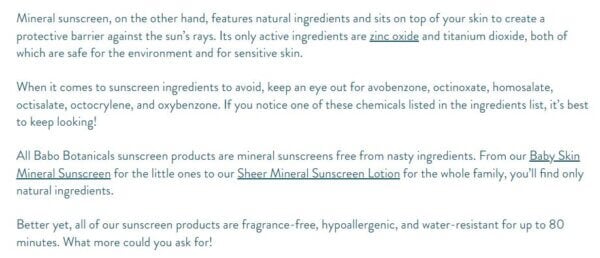
C’est Moi
This is an EWG affiliated brand – they were part of their “Clean Con” last year (I didn’t make that name up, it’s actually what they called it – kind of telling on themselves), they’re EWG verified, they adhere to European cosmetic regulations as their baseline (would be nice if they adhered to the fair and honest marketing guidelines as well)
They tell you to “avoid chemical sunscreen, look for mineral sunscreens like ours”
they have a fun post called “Sun School” which is just wrong, and also weirdly worded. “Chemical sunscreens absorb skin damaging UV rays and potentially harmful chemicals” – that’s good if they did that?
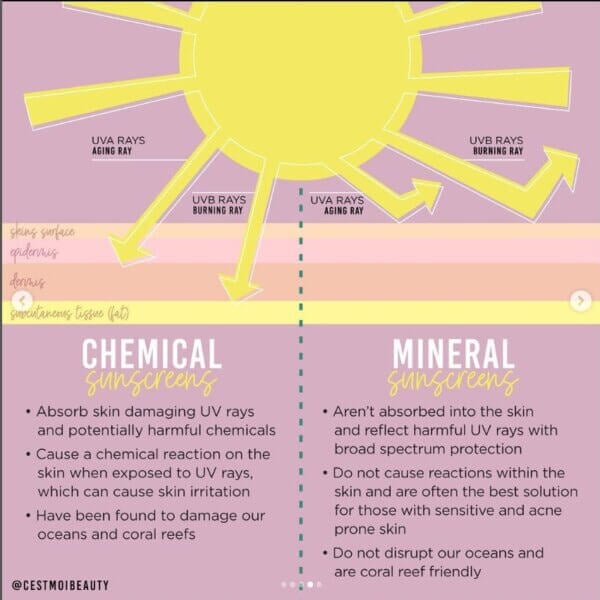
Again, let me remind you they use what is essentially a chemical sunscreen in their product – it seems irresponsible for them to be using something they say is harming humans and the environment?
Goddess Garden
Standard myths about how natural is better, non-toxic – ignore the fact that nature is constantly trying to kill us, which is why your product exists.
“Mineral filters are biodegradable” Interestingly chemical sunscreen actives are more biodegradable than minerals – zinc oxide doesn’t break down, it stays as zinc oxide – which isn’t generally a problem but if they’re going to make a claim like this it should at least be true
This bit is kind of hilarious – “Don’t higher SPFs usually use chemical sunscreen? Often, higher SPFs use chemicals to block UV rays because higher mineral content can mean a more whitening effect, but we only use minerals in our SPF 50 sunscreens and we’ve worked hard to make them sheer!” No, they’re doing this too, but in a worse way with an unregulated chemical sunscreen
“The FDA is conducting research to ensure chemical sunscreens are safe for use” – guess which ingredient they use isn’t being studied, and octisalate is one of the ones that absorbs into the blood, so your butyloctyl salicylate probably does too
“You will never find chemical actives like oxybenzone or octinoxate in our sunscreens, because our families deserve better and our environment does too” I don’t know if an unregulated and unstudied version of a chemical sunscreen is better
All Good
This brand has gone above and beyond – they’ve invented something called the “Awful Eight” because actual alliteration is for chumps I guess. Anyway, they’re just chemical sunscreens. And they’re saying other companies are greenwashing for having chemical sunscreens while saying they’re reef-friendly for not including oxybenzone and octinoxate, which is kind of true, but also they’re greenwashing because a lot of chemical sunscreens they’ve named here are actually better for coral than zinc oxide, plus of course they’re using octisalate’s outlaw twin.
They even have a special write-up about octisalate – apparently it’s the X-men of chemical sunscreen ingredients, and it enhances skin’s permeability to make it easier for other UV absorbers to enter your body, which actually links back to a Colorescience
Bioclarity
They keep referencing the EWG, which is hilarious to me because the EWG rated their sunscreens as very bad (7/10). It’s just kind of sad when the EWG doesn’t even like them.
Other SPF Boosters
Butyloctyl salicylate isn’t the only SPF booster like this. It’s the most commonly used one, and it’s probably quite safe. But it does potentially open up the door for potentially less safe ingredients to be used in a similar way. A non-exhaustive list:
- Tridecyl salicylate (structurally similar to octisalate and butyloctyl salicylate)
- Ethylhexyl methoxycrylene (structurally similar to octocrylene)
- Undecylcrylene dimethicone (structurally similar to octocrylene and polysilicone-15)
- Diethylhexyl syringylidene malonate (strucurally similar to octinoxate)
- Benzotriazolyl dodecyl p-cresol (structurally similar to drometrizole trisiloxane)

Most of these are quite similar to other sunscreen filters, but unlike with butyloctyl salicylate and octisalate, some of these have different enough changes to their structures that they might be expected to interact quite differently from the properly approved versions. And some of the properly approved versions have some potential environmental and health risks, so I really think the unregulated versions should really go through the proper safety evaluation process.
And with the very slow FDA approval process for newer filters (since 1978, only around three sunscreen ingredients have been approved in the US), the whole chemical sunscreen FDA safety reassessment , on top of the clean beauty fearmongering, I expect that these sorts of ingredients will probably be used more and more.
So I guess the takeaway here is (apart from the fact that clean beauty is BS): if you thought you were using a mineral sunscreen, and it turns out it has some of these ingredients in it, maybe you’ve just learned something about your skin. And that you can’t really generalise chemical sunscreen ingredients, because they’re a really diverse group. It might be worth trying out some hybrid or chemical sunscreens.
References
Osterwalder U, Sohn M, Herzog B, Global state of sunscreens (open access), Photodermatol Photoimmunol Photomed. 2014, 30, 62-80. doi:10.1111/phpp.12112
Shaath NA, SPF Boosters Photostability of Ultraviolet Filters, Happi Magazine, 1 Oct 2007
Sohn M, UV Booster and Photoprotection. In: Wang, S., Lim, H. (eds) Principles and Practice of Photoprotection 2016 Adis, Cham.
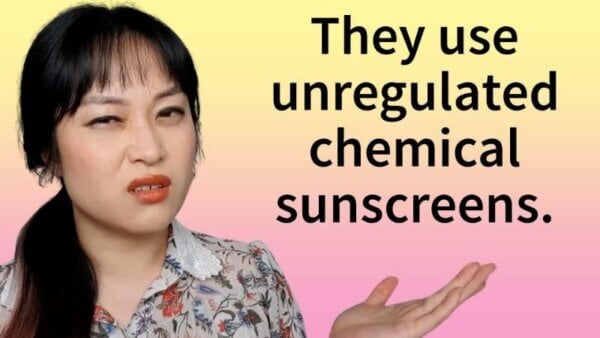


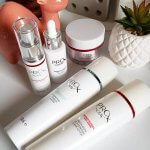
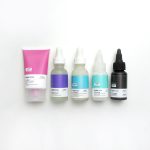
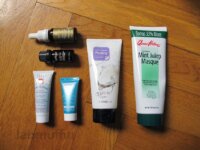
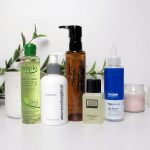
Thanks Michelle, as a reformed EWG agoniser, I’m always glad I found your site a few years ago.
My clean beauty pursuit (questioning, which was really rejecting) eventually became a burden – mentally and financially -which led to me re-questioning my ‘questioning’. And I suspect the pandemic accelerated things (it forced us to really assess our trust of science). Ps. ‘Ghost Democracy’? Classic name!
That is so interesting (and quite telling for the brands mentioned). I knew about the boosters, but never bothered to look at their chemical structure.
Now I can’t stop thinking of the “outlaw twin brother” – it gives me romcom vibes!
Well written article you did here! To answer your question why SPF-boosters are not classified as UV-filters, you will need to look into the regulations around UV-filters. More specifically the definition of what can be classified as a UV-filter in the European Cosmetic Directive, FDA regulations, ASEAN Cosmetic Directive.
Thank you! I’m not sure what you mean with the definition though – are you saying it’s lawful for companies to be using these UV-absorbing boosters at similar concentrations to approved filters?
Hey Michelle,
I love a good rant, and your rant was spot on and insightful and interesting!
Now, I’m not one to automatically jump to the defence of Australia’s regulatory processes effectiveness in general – but I guess with the whole ozone hole thing being located where it is, the kind of problems you have described has been noticed. Australia has therefore had some of the strictest requirements for SPF claims. Such as a maximum rating of 50+ because to claim more than that give a skewed impression that a higher number provides a proportionate practical benefit even though that is negligable in a practical setting.)
In the last few years, Australia has caught up with you on the problems of your articulate rant, and made changes.
For example, those Colorscience mineral powders were formally approved here to be labelled as SPF 50+, but this is no longer the case. They can now only be sold here WITHOUT claiming to provide any protective factor from UV. Because in reality, considering how they are actually applied and used, it just isn’t true. The standards are now enforced based strictly on the ability to show that the use of the product as instructed, and as consumers would most likely follow those instructions (and even if the average person would be more likely to not follow any written instructions) etc etc. And if this would definitely have the effect of SPF protection as claimed.
At first I was annoyed that all of a sudden, cosmetic products all seemed to have stopped including any sun protection. But they actually just stoped claiming to.
Was it because the testing and certification requirements were too arduous? Or because if they were being honest, the protection was never really provided by those products in the first place?
I expect it is almost always the latter – and that really WAS dangerous for peole who live at the epicentre of skin cancer.
But I am glad it has changed now so that when I buy sunscreen products down here, I know they’ll be able to save my skin.
How interesting! I wasn’t aware of the Colorescience change, glad to hear about that – although I did recently see an Australian article where a dermatologist recommended it as a sunscreen, with the SPF 50+ rating which is concerning.
I think the commenter is pointing out that depending on how chemical components are classified (or “defined” by the regulation which is typical government language), that definition is the driving factor behind allowable percentages. In this case, if BOS is defined as a “solvent”, then limits on how much can be added is based the limits for the solvent category. It doesn’t matter how similar in structure it is to OS or what other function it may have, as long as it’s not defined as a UV filter, then it’s not subject to the same rules. So yes, it may very well be lawful for BOS to be added at such high percentages, because the initial allowable limits are different.
Sorry if I’m explaining something you already know – government regulations are a beast on to itself.
Yes, that’s the excuse that the companies seem to be using – except as I wrote in the post: “within the regulations of the regions I looked at, if you’re using an ingredient in a sunscreen to absorb UV and protect the skin from UV, you are meant to register it.” In other words, the regulations are meant to be interpreted so that ingredients are defined by function and not by legal category, so this loophole doesn’t exist. The German and Swiss government agencies have said this too, and around the world the general legal trend has been towards purposive interpretations of laws and away from literal interpretations.
It’s the same reason why brands can’t claim “preservative-free” in the EU just because they’re using a preservative that isn’t defined as a preservative in Annex V: https://ec.europa.eu/docsroom/documents/24847 Some sellers of “SPF boosters” specifically say in their marketing info that they don’t contribute to the tested SPF when used at a certain percentage, which also aligns with this interpretation.
Thank you, Michelle, for this awesome article! I discovered in the past year that I’m actually allergic to chemical sunscreen filters. I’m not sure which one(s) specifically, but I know that when I wear them and then go out in the sun, I get allergic reactions that include hives on my face (that kinda look like cystic pimples except for how quickly they form) and swollen, burning, watery eyes that no eye drops or allergy meds will fix, and then the eye pain and discomfort will eventually lead to debilitating migraines. It took forever for me to figure out that chemical sunscreens were the cause of it because the reaction doesn’t happen immediately and rather once there’s been sun exposure, so now I only use mineral sunscreens. Since I’m not positive which chemical filter causes this, I’m really disappointed that some of these 100% mineral sunscreens are using deceptive tactics- the new Good Molecules sunscreen specifically comes to mind.
Thank you Michelle! I’m so glad to know my bs detector was working as it should when I saw butyloctyl salicylate start popping up in multiple mineral sunscreens. It is really disappointing that companies would resort to this though.
This makes a so much sense! I’ve tried lots of mineral sunscreens in the last few years, and I was shocked how many of them irritated my skin and eyes. I double checked the ingredients of the worst offenders and, sure enough, all of them have butoctyl salicylate in them.
I have been checking this more assiduously and yes, so many out there adding butyloctyl salicylate but claiming to be a mineral sunscreen. Generally less than 20% zinc oxide (if there’s also no titanium dioxide) almost always means there’s significant butyloctyl salicylate included.
Thank you for this information! I’m wondering if you could share more about the claims that you need to use mineral sunscreens when pregnant. I’m considering trying to conceive soon and honestly can’t imagine going back to mineral after discovering so many cosmetically elegant Japanese sunscreens that use chemical filters…
Hi Michelle
Thanks so much for this article, and for everything you do – you are so good at breaking down science in a way I can understand.
You mention UV filters and pregnancy here, but it would really good to know more about the science behind how great the risks actually are.
I finally found a mineral sunscreen I actually like to use while pregnant, but it contains Ethylhexyl Methoxycrylene. It sounds like the risk is low, but I would love to understand the science better so I can make an informed choice.
This article should help: https://labmuffin.com/us-sunscreens-arent-safe-in-the-eu-with-video/
Thanks for this, you solved a mystery for me. My rosacea reacts to many (most?) chemical sunscreens, so I don’t (knowingly) use them. I took Hero Force Shield on vaca with me b/c of the green, the consistency, the mineral-ness, and b/c it is one my husband actually likes to use. And I had a persistent, angry flare the whole time we were away that my dr prescribed cream could not knock back. I blamed everything BUT the Hero. Came home, husband stole the remainder of the Hero and poof! rosacea is calming down. I’m guessing it’s the butyloctyl salicylate.
I have really sensitive skin with rosacea and cystic acne. I’ve tried sooo many SPFs, chemical, hybrid and mineral (after reading this, they’re basically hybrids too). I was wondering if you have any suggestions for SPFs great for acne-prone sensitive skin that are mineral that don’t contain either Shea butter/oils/petrolatum/beeswax as these seem to also break me out. Honestly struggling and feel like succumbing to the sun at this rate. I’m super pale so white cast isn’t so much an issue.
I’ve also tried to combine a list of everything that’s broke me out (often in yellow pustules or red rashes or painful under skin cysts) and can’t find any common ingredient to avoid. Would be eternally grateful if your science hat has any insight on this too? (Tried and failed: Scinic mineral spf50, Garnier UV hylauranic acid fluid, Colourscience classic spf50, Bioderma photoderm aqua fluid spf50, Bondi sands face spf50, Rounda green tea spf 50, La Roche Posay anthelios liquid (frustratingly seems to be everyone’s holy grail), Eucerin oil control SPF 50 (loved it at first and then super painful cysts), Purito daily go to and Purito Soft touch (which surprised me as their original centella back before the scandal seemed ok). I do feel like the reactions aren’t as bad with the ‘mineral’ ones.
Thank you so much,
Big fan,
India